HP Elite Mini 600 G9 Power Consumption and Noise
The unit came with a 90W HP power brick. Older 35W TDP models would come with 65W bricks that were usually smaller, but this is nowhere near the size of the larger 130W+ units we see on the higher TP models.
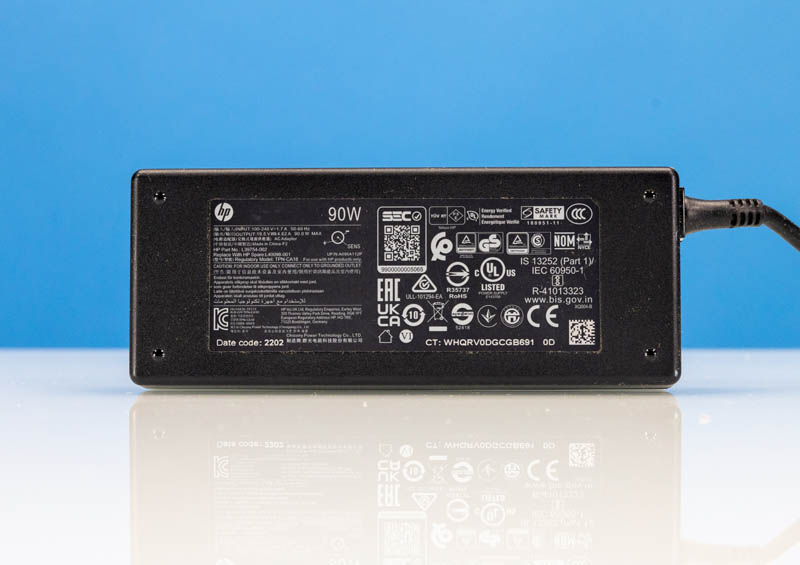
In terms of power consumption, idle was generally in the 4-5.5W range. Under load, we could get the system to 60-65W. That is very reasonable and is actually less than the Intel NUC 12 Pro that we reviewed.
In terms of noise, this system was very quiet. We showed the system in the studio pushing a 34dba studio to no more than 37dba. One can also listen to the unit in the video so we are linking that above.
Key Lessons Learned
Our key lessons learned were severalfold. Perhaps the biggest theme was just how much has changed inside a relatively familiar package. This generation changes even the name to make this an “Elite” model instead of a “Pro” model.
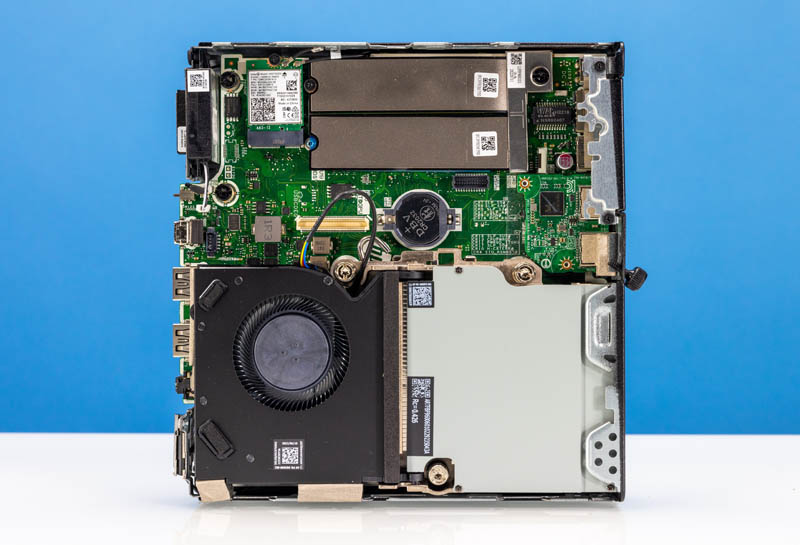
The systems can now have performance and efficient cores mixed onboard. That led to great performance, but also excellent idle and loaded power consumption. As you will see in our next Project TinyMiniMicro review from Lenovo, the Intel Core i7-12700T in this unit is a nice step up from the Core i5-12500T.
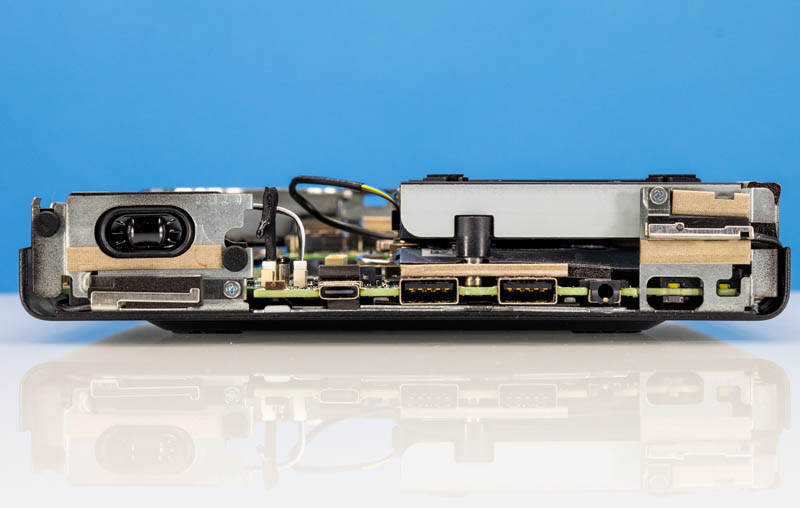
We get new DDR5, and dual PCIe Gen4 NVMe drive slots. We also learned that sometimes options like the GPU option, and 2.5GbE option are missing from the current online configurator, but other options are present that we did not see like the PCIe Gen3 SSD.
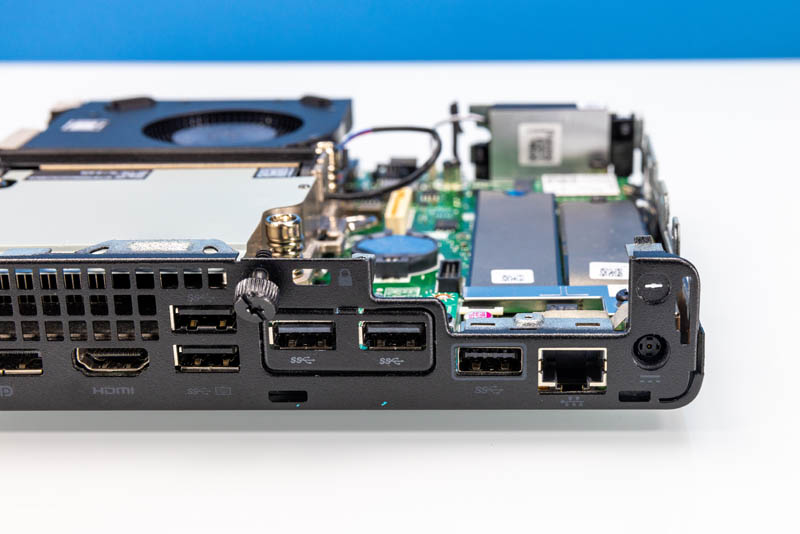
Overall, HP did a great job evolving its design. It is now a fairly good step beyond the 1L Dell OptiPlex design.
Final Words
Overall, the HP Elite Mini 600 G9 is a great little machine. These units have been too expensive for us to purchase new, but now that they are later in their lifecycle, they can be had for reasonable prices. At $500 or so for this configuration used this is going to be a large upgrade over the $200-250 8th Gen Core series. Today it takes patience to find a deal like that, but we expect in the next months and quarters that pricing will be more commonplace on the secondary market. On the primary market, HP, Lenovo, and Dell are all fairly close when all of the discounts and coupons are applied.
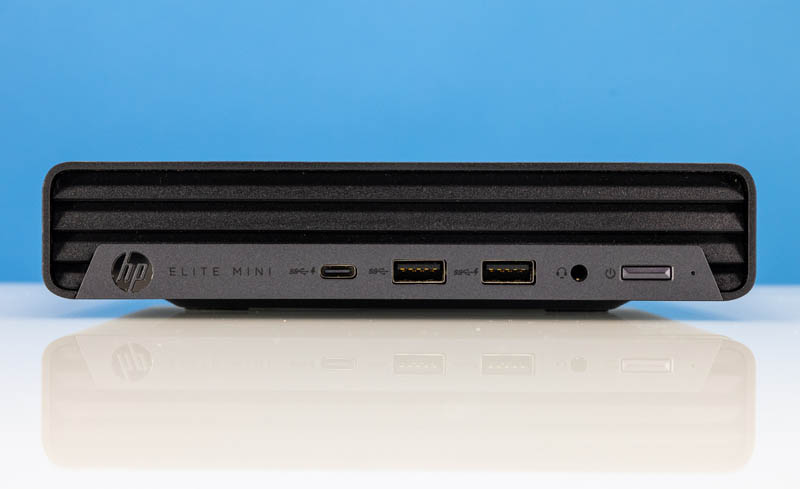
For those that have access to these in corporate environments, using these offers a lot more performance and new features than previous generations. Just beware if you have P+E cores and try repurposing these for VMware ESXi 8, since VMware requires a workaround for mixed core types. Most will use these as desktops and the Windows and Ubuntu experiences were both very good, as we would expect.
Overall, this is a great Project TinyMiniMicro node. We hope to also have a HP Elite Mini 800 G9 review early next quarter, so stay tuned as we are restarting this series.



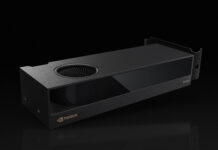
It seems like dozens of small form factor PCs have been reviewed so far. While I understand smaller computers allow for smaller cubicles in an office setting, I’m confused what good they are second hand as servers.
Are there remote management features I’m missing? Are there standard ways to rack mount them? What advantage does 2.5Gbit networking have that wouldn’t better be served with 10Gbit?
There is a small form factor PC mounted behind the TV in the conference room. It tends to overheat and shut down after about 40 minutes of use. While a mandatory break from the slide show is a feature for most meetings, I don’t see how similar behaviour would be useful in a server.
Could the fans and cooling in many of these small form factor PCs be reliable 24 hours a day under load for a server application?
Under load, probably not.
I’ve got one behind a TV that has been reliable so far, but it’s under very little load, showing an information display. Maybe if you have it right against a very hot part of the TV? Maybe a fanless mini PC which is basically all heatsink, and high temperature rating would serve your needs better?
We have had some of the fans on the HP units fail, but they have been mostly reliable for office users.
Eric – I can tell you I use these all over the place now. vPro can be used for remote management. Beyond that, it is fairly trivial to use them as a Ubuntu server. One can take a cluster of Raspberry Pi’s for example, and just change the environments to virtual on a single node like this. Overheating on the 35W units is probably less common. Rack mounting is pretty easy as well, especially if you only have a few. You can even just buy a shelf and then put these on that.
These tiny PCs have all sorts of uses.
I use one as a Plex server. QuickSync of Intel CPUs is excellent for transcoding.
It lets my NAS just serve files instead of hosting VMs.
I went with Dell 3260 Precision. It has PCIe slot and plopped in a cheap mellanox 10Gb card for faster access to my NAS. It supports 1 NMVe, 1 SATA drive, 64GB RAM.
these small pc are compromised and you are living in La La land – build a cluster out of 3 z440 for almost the same price as one mini pc is a much better option – more ram, more expandable, cheaper parts – if z440 is too old goto 6/7th gen parts – parts is parts and the pc mkt is closed down atm – hp may go bankrupt, intel is having major issues and savvy consumers will just wait it out until the cabal of big tech decides they need price wars to gain more mkt share – right now that is not happening
z440 is OLD and is way bigger using more power. These new Core i7’s are like 2x the perf of an e5-1650 v3 and faster than even the e5-2698 v3. For us, we’ll spend the extra Euros on energy bills to make these cheaper
It’s interesting that none of these HP small form factors have Thunderbolt, even as an option.
as far as value compute goes refurbs rule the roost even when higher electricity rates are concerned and with the tiny micro pc being so expensive it is really just a matter of time before soc/sbc segment supplants smaller pc in large measure – space concerns are a luxury problem and there is no real cachet value of small pc – they are tougher to work on, contain proprietary parts, are less expandable, have issues with performance on network side of things and thus can’t scale as effectively; savvy consumers will go for refurbs and take advantage of better roi and lower tco plus ease of repair-ability and upgrades but the sbc mkt is one to look at since they are largely connected and related to mobile mkt where innovation and product cycles are so much more vital and emergent – next gen sbc and soc will take a lot of mkt share away from the big entrenched interests and more competition is going to benefit everyone – look forward to sbc with fast nvme. better networking, wifi7 and usb4/5 and increased arm core counts
How does a 3050ti fit in there? Trying to find doc on the website with no luck.